Today (August 25) is National Low Carbon Day, with this year’s theme being “Low Carbon Living, Green Building Future”. When it comes to carbon, the most prominent concept currently is probably “carbon neutrality“.
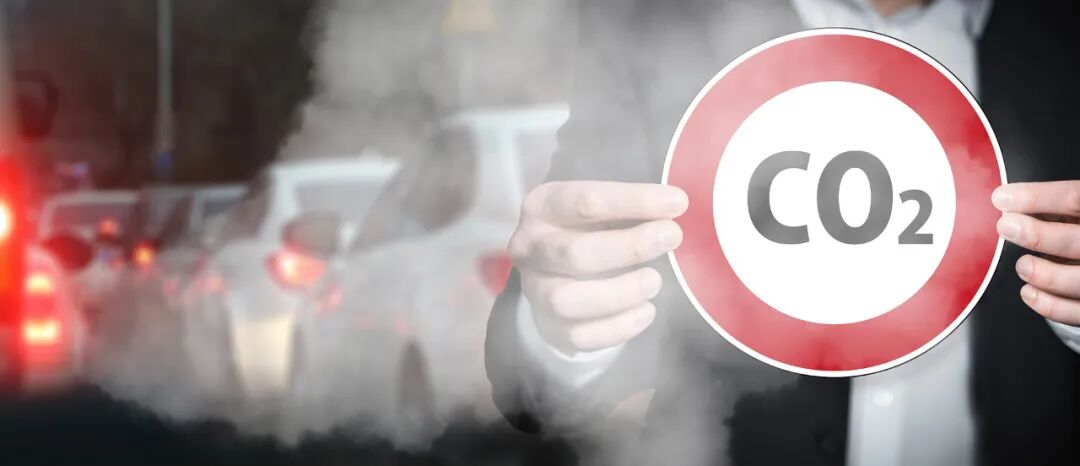
Image source: pixabay
On July 16, 2021, the national carbon market officially launched trading, and new terms related to carbon elements, such as carbon neutrality, net zero emissions, and carbon capture, suddenly emerged.

How is carbon neutralized? Can carbon be captured? What do these seemingly confusing environmental “C languages” actually mean?
Carbon Neutrality? Net Zero Emissions?
People are already quite familiar with “climate change” or “global warming”, but concepts like carbon neutrality (Carbon Neutrality) and net zero emissions (Net Zero emissions) have just recently entered our field of vision. Image source: pixabayIn fact, they reflect the same intention, which is to reduce or eliminate the impact of organizations on the climate system, and are often used interchangeably. However, strictly speaking, the two have certain differences, mainly in terms of the scope they cover and the extent of their impact on the climate:
Image source: pixabayIn fact, they reflect the same intention, which is to reduce or eliminate the impact of organizations on the climate system, and are often used interchangeably. However, strictly speaking, the two have certain differences, mainly in terms of the scope they cover and the extent of their impact on the climate:
Carbon Neutrality
If not explicitly stated, the “carbon” in carbon neutrality specifically refers to CO2, which is the well-known “carbon dioxide”. Carbon neutrality means that over a certain period, the amount of CO2 eliminated = the amount emitted.
Net Zero Emissions
“Net zero emissions” generally includes all greenhouse gases (GHG), so achieving net zero emissions requires that the amount of greenhouse gases eliminated over a certain period = the amount emitted. In other words, “net zero emissions = carbon neutrality + the neutrality of other greenhouse gases“. It is important to note that the greenhouse gases referred to here are not limited to carbon dioxide! The Kyoto Protocol defines six types of greenhouse gases: carbon dioxide (CO2), methane (CH4), nitrous oxide (N2O), hydrofluorocarbons (HFCs), perfluorocarbons (PFCs), and sulfur hexafluoride (SF6). Among them, CO2 is the main greenhouse gas.
Why is Carbon Neutrality Needed?
Currently, the concentration of CO2 in the atmosphere (data from May 2020) has reached the highest level in 450,000 years. From glacial melting to heat waves and storms, a series of extreme weather events have followed, and the impacts of global climate change have already become apparent.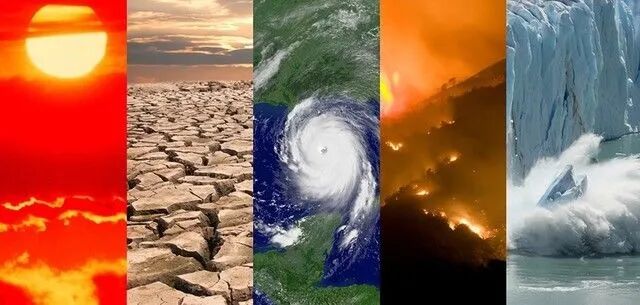 Image source: NOAA
Image source: NOAA Do you remember this image showing the severity of the floods in Henan?Image source: see watermarkIn response to climate change, in 2015, 178 parties unanimously adopted the Paris Agreement, which provides important legal guidance for global responses to climate change after 2020.The parties aim to collectively achieve the goal of “keeping the global average temperature rise above pre-industrial levels to within 2 degrees Celsius, and striving to limit the temperature increase to 1.5 degrees Celsius”. To achieve this goal, it is necessary to limit anthropogenic greenhouse gas emissions, and work together to promote carbon neutrality.
Do you remember this image showing the severity of the floods in Henan?Image source: see watermarkIn response to climate change, in 2015, 178 parties unanimously adopted the Paris Agreement, which provides important legal guidance for global responses to climate change after 2020.The parties aim to collectively achieve the goal of “keeping the global average temperature rise above pre-industrial levels to within 2 degrees Celsius, and striving to limit the temperature increase to 1.5 degrees Celsius”. To achieve this goal, it is necessary to limit anthropogenic greenhouse gas emissions, and work together to promote carbon neutrality.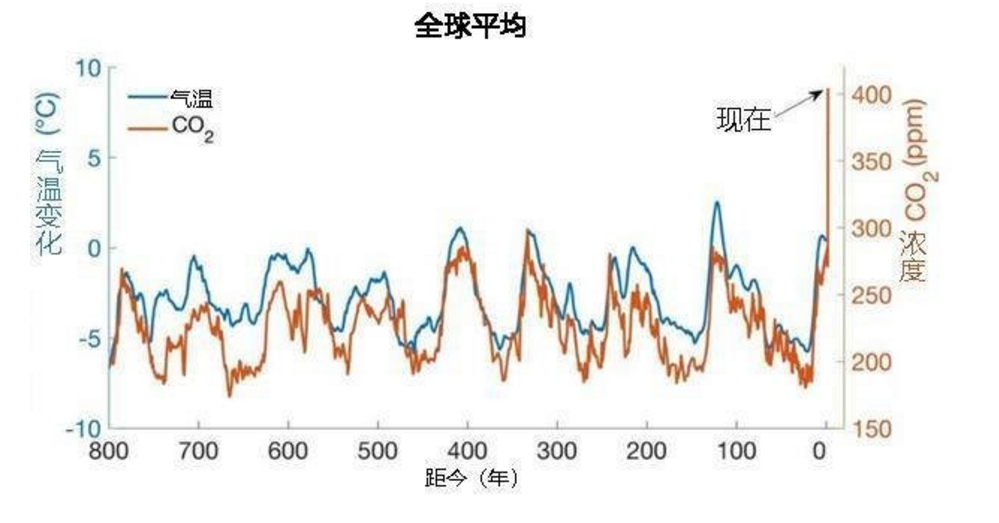 The concentration of carbon dioxide is closely related to temperature changesImage source: Ben Henley, Nerilie Abram
The concentration of carbon dioxide is closely related to temperature changesImage source: Ben Henley, Nerilie Abram
Can Carbon Be Captured?
Currently, the main source of carbon dioxide in the atmosphere is still the combustion of fossil fuels. While using low-carbon clean energy such as wind energy to replace fossil fuels is the fundamental way to achieve net zero emissions, in the short to medium term, fossil resources still play an irreplaceable role in human social development.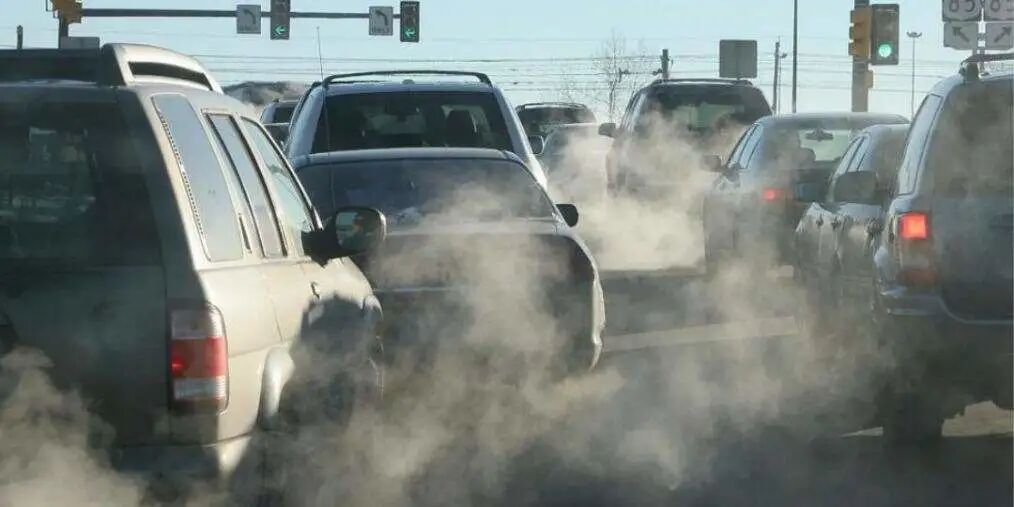 Gasoline vehicles produce a large amount of exhaustImage source: bingAs the pace of low-carbon transformation is struggling to keep up with the speed of climate change, carbon capture and storage technology (abbreviated as CCS: carbon capture and storage) has gradually gained attention from the scientific and industrial communities and has appeared in the public eye.CCS technology captures and collects carbon dioxide produced from point source pollution (such as thermal power plants) through specific physical and chemical methods, and then compresses the carbon dioxide, transports it to suitable locations, where it is injected underground or into the ocean for permanent storage (also known as “sequestration”).
Gasoline vehicles produce a large amount of exhaustImage source: bingAs the pace of low-carbon transformation is struggling to keep up with the speed of climate change, carbon capture and storage technology (abbreviated as CCS: carbon capture and storage) has gradually gained attention from the scientific and industrial communities and has appeared in the public eye.CCS technology captures and collects carbon dioxide produced from point source pollution (such as thermal power plants) through specific physical and chemical methods, and then compresses the carbon dioxide, transports it to suitable locations, where it is injected underground or into the ocean for permanent storage (also known as “sequestration”).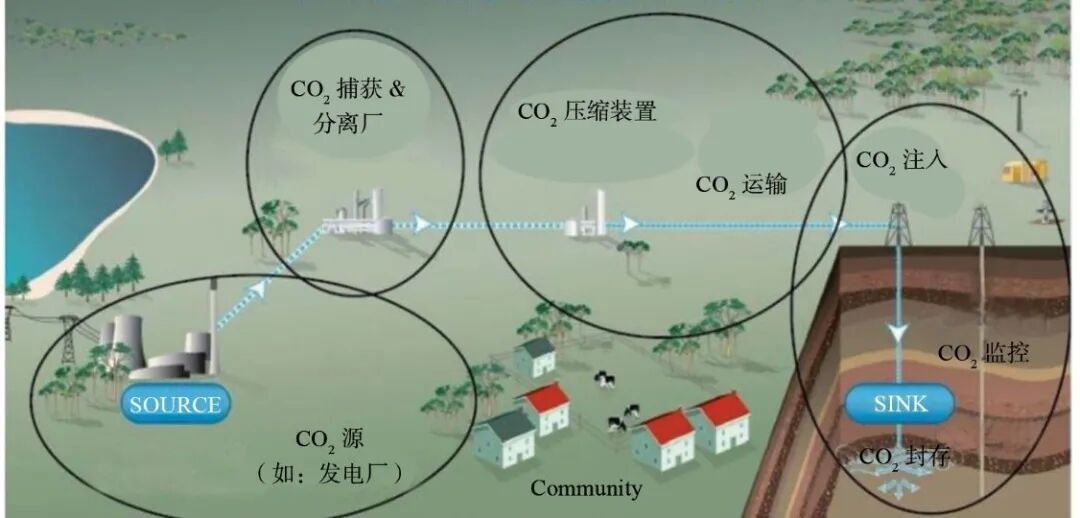 Image source: bingMainstream carbon capture technologies include chemical absorption methods (Benfield method, methyldiethanolamine method), adsorption methods (pressure swing, temperature swing), physical absorption methods (polyethylene glycol dimethyl ether method, low-temperature methanol washing method), and membrane separation methods, etc. When transporting carbon dioxide, pipelines are usually used, but it can also be transported by train, truck, or ship. This carbon dioxide will be stored through geological, oceanic, and chemical methods, and currently, geological structures with storage potential include depleted oil and gas fields, aquifers, and deep saline formations.According to the China Carbon Dioxide Capture, Utilization and Storage Annual Report (2021), the global theoretical storage capacity on land is 600 to 4200 billion tons, and the theoretical storage capacity under the sea is 200 to 1300 billion tons.China’s geological storage potential is approximately 121 to 413 billion tons.
Image source: bingMainstream carbon capture technologies include chemical absorption methods (Benfield method, methyldiethanolamine method), adsorption methods (pressure swing, temperature swing), physical absorption methods (polyethylene glycol dimethyl ether method, low-temperature methanol washing method), and membrane separation methods, etc. When transporting carbon dioxide, pipelines are usually used, but it can also be transported by train, truck, or ship. This carbon dioxide will be stored through geological, oceanic, and chemical methods, and currently, geological structures with storage potential include depleted oil and gas fields, aquifers, and deep saline formations.According to the China Carbon Dioxide Capture, Utilization and Storage Annual Report (2021), the global theoretical storage capacity on land is 600 to 4200 billion tons, and the theoretical storage capacity under the sea is 200 to 1300 billion tons.China’s geological storage potential is approximately 121 to 413 billion tons. Image source: sxyuxiang.gotoip55.comSince CCS technology can help us solve problems, does that mean we can stop energy conservation and emission reduction?Although, in essence, only a complete decarbonized energy system can avoid dangerous climate change, CCS technology can achieve large-scale carbon dioxide reduction under the existing energy structure in the short to medium term, making it highly promising for promotion and application.
Image source: sxyuxiang.gotoip55.comSince CCS technology can help us solve problems, does that mean we can stop energy conservation and emission reduction?Although, in essence, only a complete decarbonized energy system can avoid dangerous climate change, CCS technology can achieve large-scale carbon dioxide reduction under the existing energy structure in the short to medium term, making it highly promising for promotion and application.
However, like all things, CCS technology also has some unavoidable issues:
● 1. There are technical bottlenecks;
● 2. The cost of large-scale promotion is high;
● 3. There are limited storage sites;
● 4. The public may have a resistant attitude towards land storage;
● 5. There are safety issues with the stored CO2 in the event of earthquakes or other geological events.
These issues make large-scale application of CCS very challenging.Moreover, if the current industrial economic structure does not transition to low carbon, merely relying on CCS technology to solve climate change issues will lead humanity to face even more severe sustainable development problems in the future, such as fossil energy depletion and saturation of carbon storage sites.
Unknowingly, you have been influencing emission reduction
In contrast to the technological approach of “carbon capture” to address natural issues, there are “nature-based climate solutions (Natural Climate Solutions)” that align with natural laws, which have also been recognized by scientists for their emission reduction potential and are safer and more sustainable.What are “nature-based climate solutions”? The most typical example is what we often refer to as afforestation. In addition, protecting natural resources, reducing waste, and improving resource utilization efficiency are also low-carbon lifestyles that have significant emission reduction effects.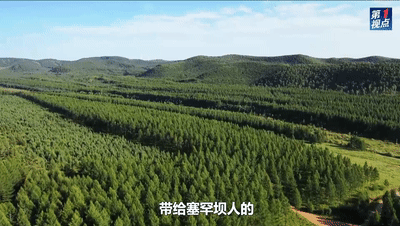 Typical example of afforestation: Saihanba Forest FarmImage source: Xinhua News AgencyBesides the extraction and use of fossil fuels, agricultural activities and deforestation are also significant sources of greenhouse gases due to land use changes, causing greenhouse effects that are comparable to energy consumption.
Typical example of afforestation: Saihanba Forest FarmImage source: Xinhua News AgencyBesides the extraction and use of fossil fuels, agricultural activities and deforestation are also significant sources of greenhouse gases due to land use changes, causing greenhouse effects that are comparable to energy consumption. Land after deforestationImage source: pixabayFor example, rice cultivation and the raising of ruminants such as cattle and sheep are the primary sources of methane; nitrogen fertilizer application and animal manure management are the main sources of atmospheric nitrous oxide emissions. In China, agricultural activities produce 50.15% of the country’s methane and 92.47% of nitrous oxide.Every piece of food we consume carries a certain amount of greenhouse gas emissions and natural resource consumption. As responsible “food consumers”, saving food and refusing waste is a low-carbon contribution we can make every day.
Land after deforestationImage source: pixabayFor example, rice cultivation and the raising of ruminants such as cattle and sheep are the primary sources of methane; nitrogen fertilizer application and animal manure management are the main sources of atmospheric nitrous oxide emissions. In China, agricultural activities produce 50.15% of the country’s methane and 92.47% of nitrous oxide.Every piece of food we consume carries a certain amount of greenhouse gas emissions and natural resource consumption. As responsible “food consumers”, saving food and refusing waste is a low-carbon contribution we can make every day. Research shows that the carbon dioxide and other greenhouse gas emissions caused by household consumption in our country account for 52% of the total greenhouse gas emissions in China.Every 0.5 kg of food saved can reduce greenhouse gas emissions by 0.47 kg of CO2 equivalent.With a large population in our country, individual waste may seem insignificant, but multiplied by 1.4 billion, it becomes a huge waste. If everyone saves a little, multiplied by 1.4 billion, it will become a significant carbon reduction action.
Research shows that the carbon dioxide and other greenhouse gas emissions caused by household consumption in our country account for 52% of the total greenhouse gas emissions in China.Every 0.5 kg of food saved can reduce greenhouse gas emissions by 0.47 kg of CO2 equivalent.With a large population in our country, individual waste may seem insignificant, but multiplied by 1.4 billion, it becomes a huge waste. If everyone saves a little, multiplied by 1.4 billion, it will become a significant carbon reduction action.
You can do it:
When traveling, try to use public transportation and drive less;
At work, promote paperless office practices;
When electrical devices are not in use for long periods, turn off the power to reduce standby energy consumption;
Reduce the use of single-use plastic products;
Save food and refuse waste…
These low-carbon actions may seem small, but the collective actions of thousands of people, over time, will surely converge into a powerful green force.

References:
1.Willeit, M., Ganopolski, A., Calov, R., & Brovkin, V. (2019). Mid-Pleistocene transition in glacial cycles explained by declining CO2 and regolith removal. Science Advances, 5(4), eaav7337. https://doi.org/10.1126/sciadv.aav7337
2.Dong Hongmin, Li Yue’e, Tao Xiuping, Peng Xiaopei, Li Na, Zhu Zhiping. Greenhouse Gas Emissions from Agricultural Sources in China and Countermeasures for Emission Reduction Technology [J]. Transactions of the Chinese Society of Agricultural Engineering, 2008, {4}(10):269-273.
3.Cai Bofeng, Li Qi, Zhang Xian, et al. Annual Report on Carbon Dioxide Capture, Utilization and Storage (CCUS) in China (2021) – Research on China’s CCUS Pathways [R]. Environmental Planning Institute of the Ministry of Ecology and Environment, Wuhan Institute of Rock and Soil Mechanics, Chinese Center for 21st Century Agenda Management. 2021.

Scientific Review: Luo Shanghua, PhD, Associate Researcher, Institute of Ecology, Chinese Academy of Environmental Sciences
Editor: One Week
This article is owned by the Shanghai Natural History Museum
Unauthorized reproduction is prohibited
